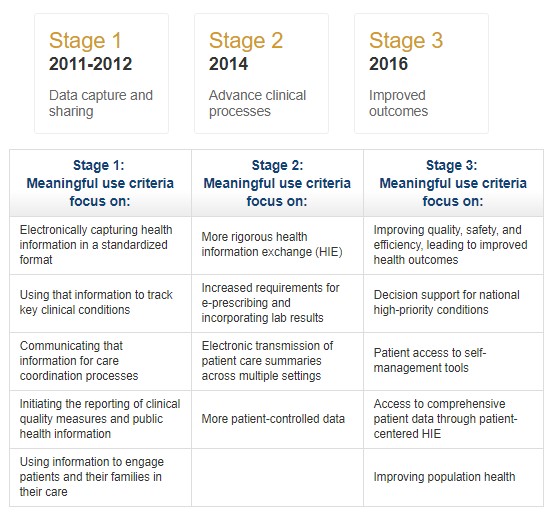Few topics rival the complexity of healthcare in the United States. The process of how healthcare will be transformed by mobile digital technology is one. The paradigm shift led by these technologies promises to transform healthcare from an industry that’s funded by illness to one rewarded by keeping people healthy. For many healthcare professionals, how this will transpire may be very scary, very challenging and, potentially, very rewarding.
Healthcare Supply, Demand and Inefficiency
Before getting into mobile digital transformation, why do we need it? If you are like most healthcare professionals, you’ve heard it all before and worse – feel and deal with it every day.
- Per the American Journal of Managed Care, a third of Americans delay medical attention because of cost.
- New patients must wait an average of over 24 days to see a doctor, according to Medscape.
- The AMA cites 80% of doctors work overtime, with 20% working between 60 and 80 hours a week. The AMA also indicates 50% of doctors would like to put in fewer hours.
- A Mayo Clinic study finds 54% of physicians show signs of burnout.
- By 2025, the Association of American Medical Colleges estimates a shortage of up to 88,000 doctors.
- US healthcare costs 2-3 times more than and quality lags behind 80% of OECD countries.
These statistics could argue that US healthcare demand exceeds what 950,000 practicing physicians can supply. At face value, it could be mistaken as a supply and demand issue. But, there’s more to this story.
A 2016 report from Bloomberg offers a different perspective: it ranks the US 50th of 55 countries for healthcare efficiency. Backing this up is the fact that, depending on the type of practice, physicians spend 30 to 60 minutes on paperwork and administrative support for each hour of patient care. Worse yet, some studies assert they spend double that. Is it a necessity that 950,000 people with 6 to 8 years of medical school spend 30-50% of their day completing forms?
The implications of this inefficiency are staggering, representing a significant cause of the high price and lagging quality of care.
So, what is Mobile Digital Healthcare Transformation?
Let’s call it the alignment of operational processes that enable a healthcare provider to make efficient and optimal use of mobile digital technologies. There are fancier explanations, but mobile digital healthcare transformation is a process. It is not something that happens overnight or that is likely to ever stop — because as mobile and digital innovation continues to develop, so will the opportunities to use it to improve medical efficiency and patient care.
At its simplest, it considers that entire rooms full of cabinets with drawers filled with folders full of paper forms can be digitally consolidated onto the equivalent of a USB thumb drive that’s immediately available to and available for update by medical personnel (with proper safeguards for privacy and safety, of course). Leastwise, that’s more logical than trying to fit digital data to a hard copy file format.
Mobile Digital Transformation for Value-based Healthcare?
No article about the US health industry would be complete without citing its annual cost of $3.3 trillion, amounting to 18% of US GDP and rising. But, imagine if… that was the cost of keeping everyone healthy? Imagine if that was the cost of keeping people out of hospital beds instead of in them?
That may be dreaming, but it underscores a growing commitment held by some major players in the health industry on value-based healthcare. In a recent episode of CXOTalk, David Hinchcliffe, Chief Strategy Officer of 7Summits, interviews David Chou, Vice President, CIO, and CDO of Children’s Mercy Hospital in Missouri, a $2 billion pediatric care organization with 8,000 employees. If you don’t have 45 minutes, the following is a quick explanation by Aetna:
The Aetna video summarizes value-based healthcare nicely as, “…instead of paying to treat people when they are sick, doctors and nurses are paid based on how healthy they keep their patients.”
That is a radical game changer and could generate more competition amongst healthcare providers.
EHR and EMR Systems as the Backbone
Reducing paperwork was one, but only one, of the original goals of legislation mandating healthcare providers to implement Electronic Health Records. Timing for the Health Information Technology for Economic and Clinical Health (HITECH) Act of 2009, could have been timed better – about four years too early to make efficient use of mobile technologies. Really, paperwork reduction is merely a beneficial side-effect of the first stage of implementing a properly structured EHR system, as shown in the following chart from HealthcareIT:

Three stages of meaningful use of EHR Systems – HealthcareIT.gov
What’s Holding Providers back?
Referencing the CXOTalk interview with David Chou again, he explains that many providers are spending 80-90% of their IT budgets maintaining legacy systems, and only 10-20% on innovation. Add to that the financial pressures associated with the Affordable Care Act, as well as its recent revisions and any future impacts and uncertainties over future changes, and we have our answer. Providers can’t be expected to just dump their existing systems: evolution will be far more likely than revolution.
Implementing a complete IT overhaul along with the conversion of all existing records with a mind toward future mobile-first compatibility is not something that happens overnight. Plus, it’s not cheap.
But, comparatively speaking, it’s likely to be even more expensive and less sustainable to maintain the status quo. The situation is even worse for nearly 700 rural hospitals, nearly 1 in 8 of all US hospitals, already at risk of closing.
So, what’s a poor Samaritan to do? Find and follow the best and most successful “efficient” examples available – and devise a plan to do the same.
Mirror Mirror on the wall, Who’s the most efficient of them all?
Amazon
It’s easy to interject Amazon.com into this discussion: the company epitomizes efficiency. Amazon didn’t start out so efficient, but it has distinguished itself by their relentless pursuit of it. It’s gone from selling books to selling everything, even announcing its own plans to enter the healthcare market. Amazon has, for practical purposes, single-handedly captured over 43% of the US eCommerce Market and adds over a million products to its online catalog, daily.
Why? Well, a lot of that comes down to more efficiently cataloging and shipping more products than many retailers. Amazon is cost-efficient, fast and arguably more convenient than driving to a local store.
There are three approaches Amazon uses that the healthcare industry can follow to increase efficiency:
- Focus on work processes, using workflow schematics and SOPs to help show what can be simplified and possibly even automated. Amazon has a workflow schematic showing every action and decision point between when a customer places and then receives an order.
- Define, measure, analyze and improve everything. Every work process has a metric and a dollar value. This makes it possible to compare both quality and quantity of doing the same task differently – and, by extension, determines cost-savings over time.
- Amazon invests heavily in its own technology and infrastructure. Healthcare providers may not be producing their own devices or software, but many still use outdated legacy systems making it difficult and expensive to “plugin” new technologies and applications.
The processes involved in their warehouse distribution facilities contributed in large part to defining the technologies needed to create Amazon Go – their cashierl-ess grocery store in Seattle. Where most retailers are looking at how to decrease checkout times, Amazon asks, “Do we even need cashiers or checkout lanes?”
A Major Shift in Healthcare Reimbursements
The Department of Health and Human Services expects to shift 50% of Medicare and Medicaid reimbursements to values-based payments during 2018. According to Cracking the Code on Health Care Costs by the Virginia-based State Health Care Cost Containment Commission, the goal is to, “Replace the nation’s reliance on fragmented, fee-for-service care with comprehensive, coordinated care using payment models that hold organizations accountable for cost control and quality gains.” Fundamentally, the expectation is that healthcare providers have had nearly a decade to implement EHR systems, and now they will put them to truly meaningful use.
Functionally speaking, this is the beginning of the end to healthcare as we’ve known it. It’s a radical shift in thinking to go from essentially trying to fill hospital beds to trying to keep them empty. The technology to make that happen exists, from smart health cards to remote triage and video conferencing, all manner of medical wearables, and persistent, real-time patient health data feeds for predictive and preventative healthcare management.
We believe this opens up many new conversations for healthcare providers to have, not just with patients and insurance companies, but with designers and developers of new mobile technologies and the applications powering them. It warrants a shift in our own thinking, too – so while this is Reinvently’s first article on the mobile digital transformation of healthcare, it’s by no means our last. It’s just the beginning.
Let’s Get Acquainted
Are you just starting to lay your plans for mobile digital transformation? Maybe you have a new medical device needing an application to tie into existing EHR systems? We imagine you would like to start gathering information about developers to help you compare and make future decisions. Unless your plan involves going with the absolute cheapest developer you can find, maybe we can arrange a talk? You’re here already, so that would be a very efficient next step.
Healthcare Application Portfolio
At Reinvently, we adhere to the same focus on process in developing healthcare applications as Amazon does to ship books, shoes and electronic devices. That’s one reason why companies like Sotera Wireless, Pediaq and BreathResearch turned to us for their mobile app development and design. BreathResearch received distinction and extra funding from the United Nations and Solve at MIT to help improve prevention, early detection and management of chronic respiratory disease worldwide..
If you have a few moments, see our apps in action:
Caption: Visi Mobile App presentation by Sotera Wireless
Caption: Qcare by Pediaq – On-Demand Pediatric Care
More mHealth Reading Recommendations:
- mHealth Enhanced EHR – Paperwork Pain Relief
- Does your Mobile Medical App Need FDA Approval?
- EMR: Biometrics and Blockchain – How Secure is Secure Enough?






Leave a Reply